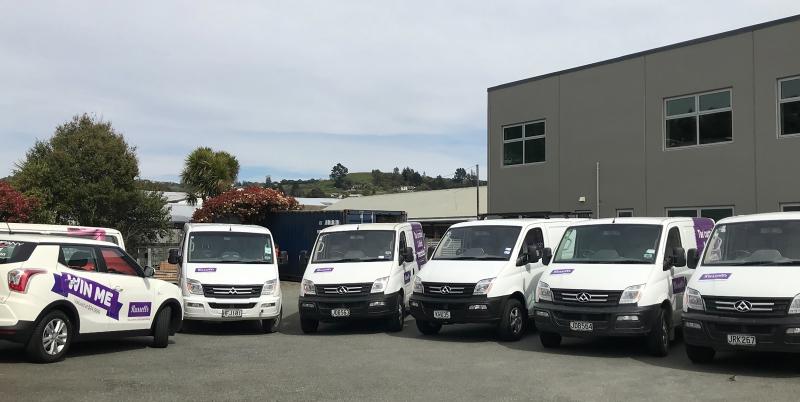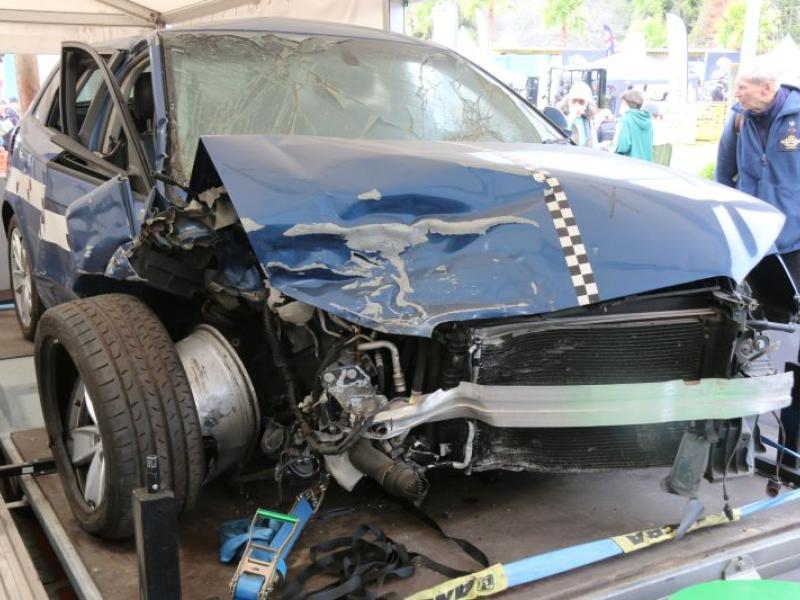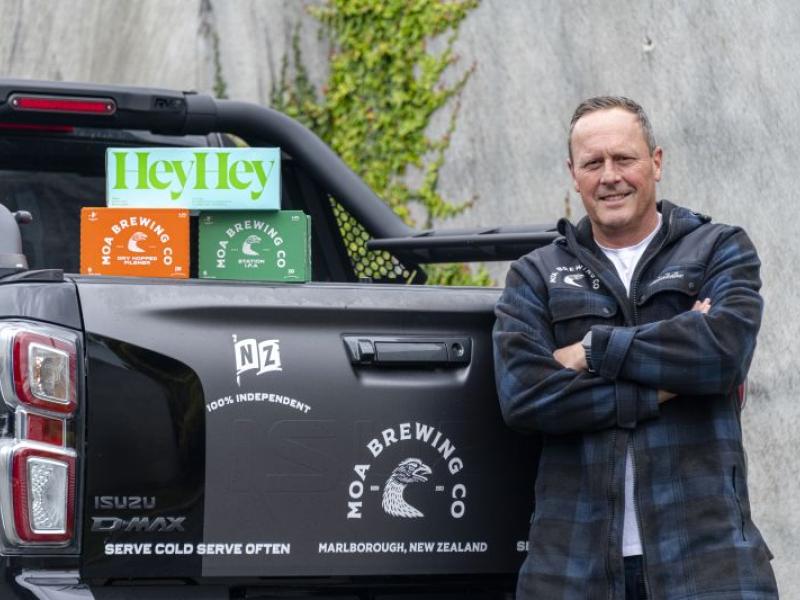Annie Gray looks at a hard-working fleet with mobile showrooms and a real health and safety focus.
Why, as managing director and owner of thriving Nelson business Russell Curtains, is Bill Liddell undertaking the fleet management for the company? It’s quite simple really. With around 40 staff on the road all around New Zealand at any one time, it’s a huge investment for the business and the health and safety of his team is paramount.
Liddell says that by directly monitoring his team’s driving habits he can have a have a gentle discussion, if he has any concerns.
And he is a big fan of both the fleet management tool the company uses and of the LDV fleet vehicles he has chosen for his travelling team members.
The fleet management system is through New Zealand headquartered EROAD which monitors the company’s road charging and tax compliance along with health and safety compliance.
Liddell says this is a fantastic tool which they use to ensure their people keep safe on the road, are not speeding and that the office knows where they are.
It also monitors the mileage and tyre rotation along with warranties, registration, oil and cam belt changes.
“It’s wonderful. I used to work [it all out] on a spreadsheet and it drove me mad.”
EROAD also reports back on sharp braking but the big thing he keeps an eye on is speeding.
“I don’t get carried away but if I see a heap of speeding by one person I pick up the phone and talk to them and I do it quickly too. My greatest risk for health and safety is people driving on the roads.”
He says his staff see some very “hairy” driving, right around the country, including drivers on the wrong side of the road.
But, fortunately, the company has not had a driver in a major accident.
Liddell says while the whole EROAD package is useful he enjoys the fact all the servicing is accurate and it all helps to keep the fleet running efficiently.
It only takes a few minutes to read the reports from EROAD and he has a staff member who monitors all the EROAD updates on servicing, warrants, registration, etc, to make sure they are done.
Russell Curtains dates back to 1929 when George Russell started a furniture business in Nelson and it was run by four generations of the Russell family until Liddell and his wife Jenny bought the business in 2003.
It now boasts a curtain workroom in Nelson employing 32 machinists, a blind factory, also in Nelson, with 15 staff and 26 consultants dotted around the country from Auckland’s North Shore to Invercargill who are supported by 15 curtain installers nationwide. Overall they have a staff of 105 people.
The consultants and installers are the main users of the 52-vehicle fleet and Liddell speaks very highly of the LDV G10 and LDV V80 vans the company uses for mobile showrooms and for its installer vans.
The consultants visit clients’ homes equipped with more than 3000 fabric samples in their specially fitted out mobile showrooms. Once the curtains have been made in Nelson, the team of installers will fit the new blinds or curtains at the client’s home.
He says the LDV vans are hugely more efficient on fuel and tyre-life than previous vans the company has used and he estimates they now get another 10,000 kilometres of tyre-life with each van.
The bigger V80 vans, he says, are more like a light truck as opposed to trying to use domestic type vans for the showrooms. The vehicles have very big backs for the vast array of samples the consultants carry and are high off the ground.
“It is definitely the right vehicle for what we do.”
The fleet is all bought brand new and is currently under four years old. The replacement policy works by waiting till the vehicles have done around 200,000 km although the installers may do that in three to four years.
As to why he chose the LDV’s he says they are not a luxury vehicle but are really well appointed, are a very practical van and do a very good job.
As well as the LDV vehicles the company also has eight cars for sales managers, commercial reps and senior staff which are Ssangyong Korando, which Liddell says are a good value car.
The company has a close working relationship with the owners of Nelson’s The Car Company and Russell Curtains has been buying its vehicle fleet from them since 2003. The vehicles are all maintained by the LDV dealerships around New Zealand.
All of the vans are sign written which Liddell says is his best advertising.
“We find if a sales consultant goes from Christchurch to Kaikoura to do three jobs, the next week we have phone calls from Kaikoura to go back again.”
As the vehicle fleet is used as a strong promotional tool they need to be clean and tidy looking. The vans are cleaned every week and if a driver changes vans it comes back to Nelson, is fully cleaned, any marks or chips are removed, signwriting tidied up and sampling reviewed.
Asked about electric vehicles, Liddell says it is certainly something he will be looking at in the future and he believes LDV has an electric vehicle with a big space for a battery. He sees EVs as the way forward but may think about hybrid vehicles in the first instance.
As to accidents, every van has a procedural manual aboard, every incident has to be reported and as the managing director he deals with this area of the fleet management personally.
Liddell says the most important thing for him is that the vans are well maintained, are very practical to use, handle well on the road in all conditions and are a hugely cost effective.






